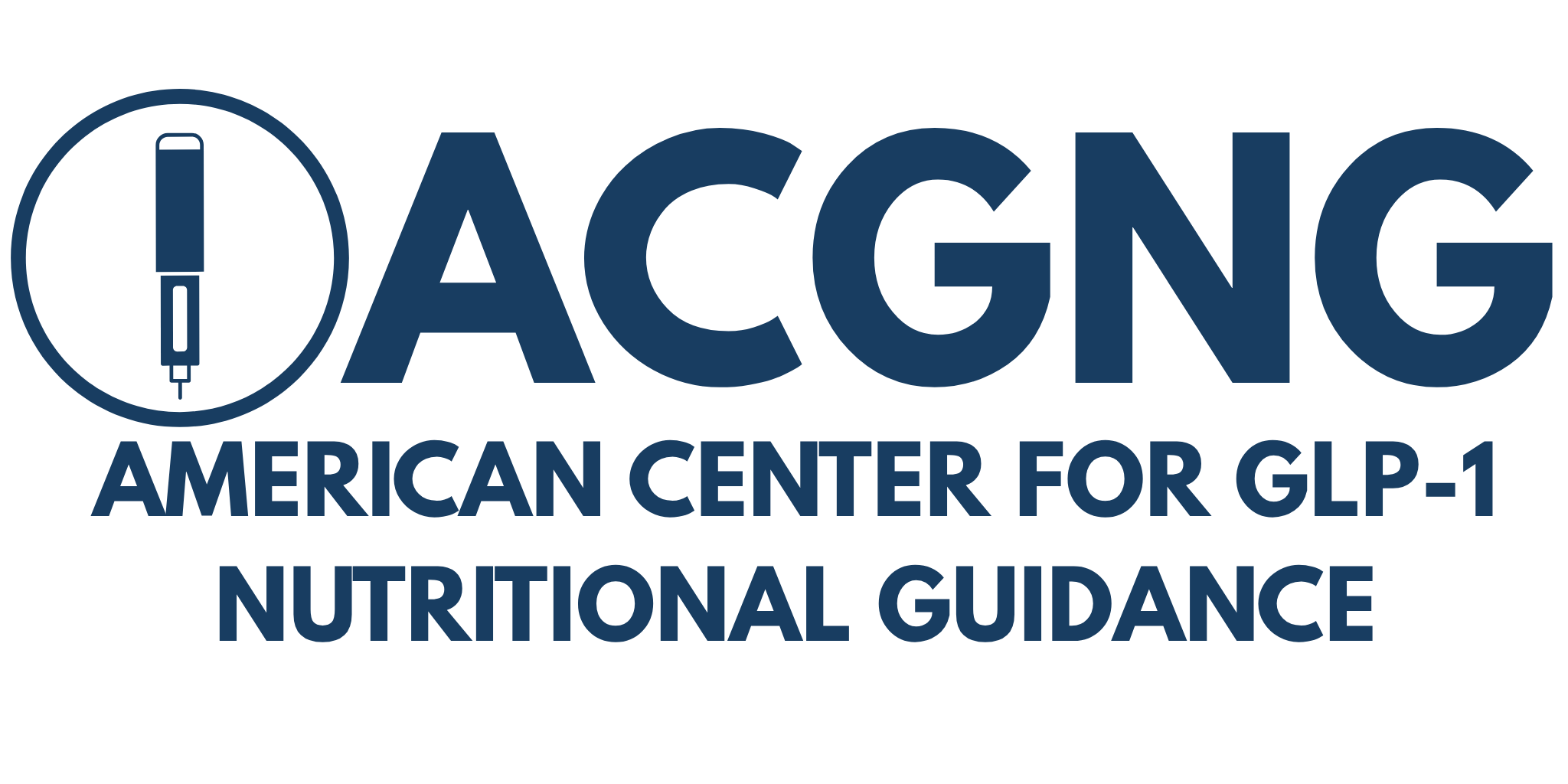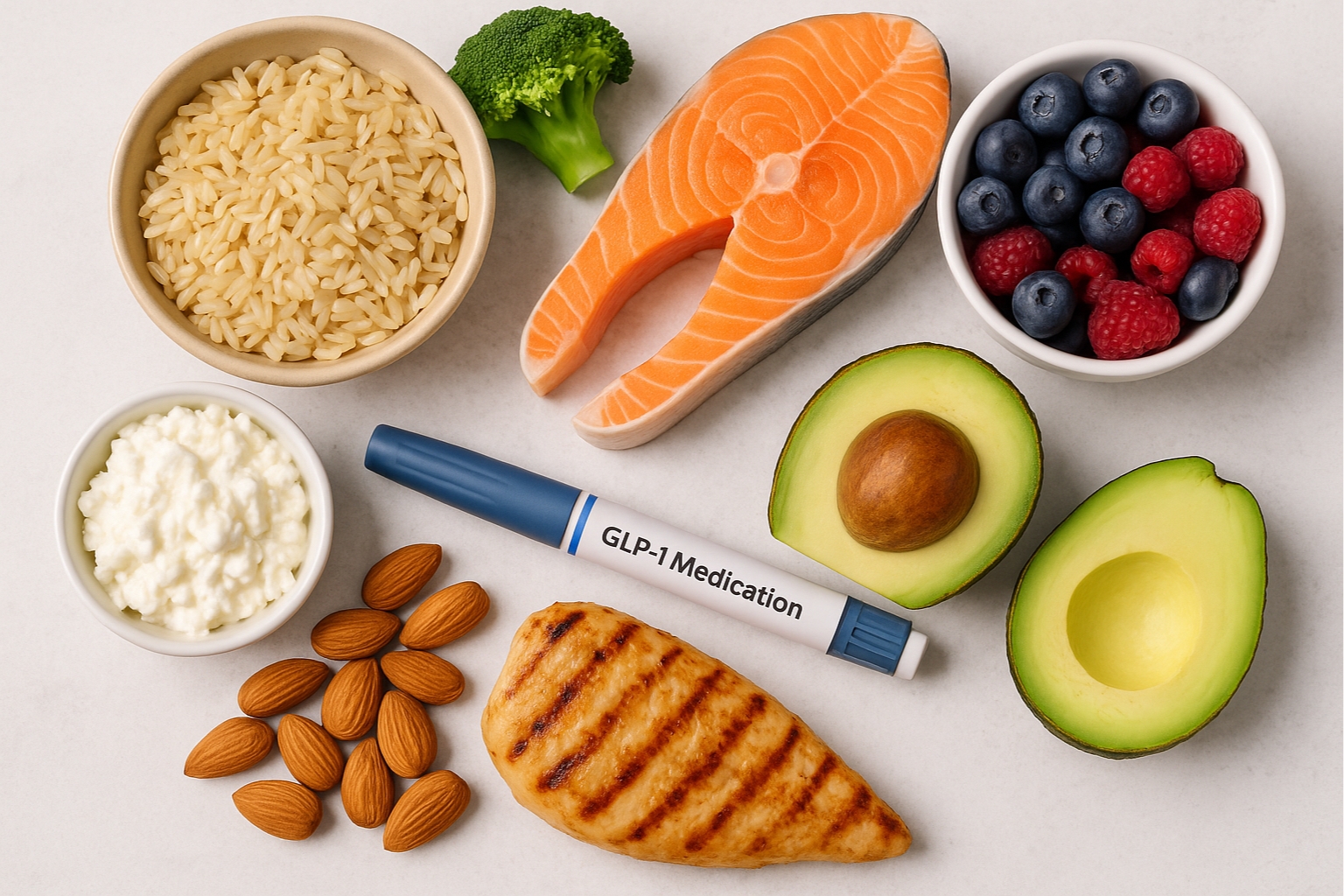Introduction
Meal planning can simplify your week, reduce food waste, and help you maintain a nutrient-rich diet while using GLP-1 medications. The key is to focus on whole foods, balance your macronutrients, and keep portions appropriate to your appetite.
Core Principles of Nutrition-Forward Meal Planning
- Build around protein: Include lean protein in every meal to maintain muscle and curb hunger.
- Fill half your plate with non-starchy vegetables: They’re low in calories but high in fiber, vitamins, and minerals.
- Smart carbs: Choose whole grains, legumes, or starchy vegetables for sustained energy and fullness.
- Healthy fats in moderation: A small amount of avocado, nuts, seeds, or olive oil adds flavor and promotes satiety.
Portion Control Tips
- Use measuring cups or a food scale when prepping meals for better portion awareness.
- Listen to your body’s hunger and fullness signals—stop eating when satisfied, not stuffed.
- Pre-portion snacks (like nuts, fruit, yogurt) in small containers to prevent overeating.
- Use smaller plates and bowls to help control visual cues that influence how much we eat.
Sample Daily Meal Plan (1,500–1,600 calories)
Breakfast
- 2 scrambled eggs with spinach and tomato
- 1 slice whole grain toast with 1 tsp avocado
- 1 small apple
Lunch
- Grilled chicken breast (3–4 oz)
- Mixed greens salad with olive oil & vinegar dressing
- 1/2 cup quinoa or brown rice
Snack
- Greek yogurt (unsweetened) with 1 tbsp chia seeds and berries
Dinner
- Baked salmon (4 oz)
- Steamed broccoli and roasted sweet potato (1/2 cup each)
Meal Prep Suggestions
- Batch cook proteins (chicken, tofu, fish) and store in fridge/freezer.
- Pre-chop vegetables and store in containers for fast salad or stir-fry assembly.
- Use bento boxes or divided containers to create portioned meals for the week.
- Make sauces and dressings in advance to elevate simple meals quickly.
Tools for Success
- Download a free 7-day meal planner or use an app to log meals and track nutrients.
- Grocery shop with a list based on your weekly plan to stay on budget and reduce impulse buys.
- Prep meals that reflect your cultural preferences to maintain enjoyment and satisfaction.
References
- Harvard T.H. Chan School of Public Health. “The Nutrition Source: Healthy Meal Planning.” 2023.
- Academy of Nutrition and Dietetics. “How to Build a Healthy Plate.” Updated 2023.
- National Institute of Diabetes and Digestive and Kidney Diseases (NIDDK). “Portion Distortion.”
- NIH Office of Dietary Supplements. “Meal Planning for Weight Loss.” Updated 2024.

